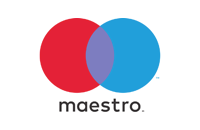| EN 374 Explained11 April 2024 Trying to learn about EN 374 safety standards can make your head spin, but it's a crucial standard to get to grips with for those who require shielding against chemicals or harmful micro-organisms. To ensure effective protection in the workplace, or during a range of heavy-duty DIY tasks, it's important to understand what exactly the EN 374 standard tests, and the information that the symbols and letters associated with the standard convey. If you need protection from hazardous chemicals or harmful micro-organisms for your workplace or personal projects, we've put together this guide to effectively explain the EN 374 standard, and help you to understand what to look for when choosing protective gloves. What's Covered in This Guide?
What Is EN 374 Testing?The EN 374 safety standard evaluates gloves designed to provide protection against chemicals or micro-organisms. The safety standard is divided into four sections, each testing a different feature of the gloves to ensure excellent performance levels and a high level of protection. EN 374 Versus EN 374:2016The EN 374:2016 safety standard that is now in common use is a revised form of the EN 374 standard. The 2016 standard was created to ensure that all of the relevant features of chemical protection gloves are rigorously tested. The changes implemented in the revised standard include:
Which Specific Glove Features Are Tested?EN 374-1 (Protection from Chemicals or Micro-Organisms)The EN 374-1 rating tests how well the gloves generally hold up to contact with 18 different chemicals. They will then be given a letter certification (A, B, or C) determined by how long they are able to withstand contact with these chemicals, and how many chemicals they can shield against. An EN 374-1 rating will often be displayed with the below logo on the declaration. The 'type' here refers to the letter certification rating. The letters beneath the symbol each represent a specific chemical that the glove can shield against.
Chemicals used to test the protective properties of gloves include:
Once tested against these chemicals, the letter certification is awarded as follows:
EN 374-2 (Resistance to Penetration)The EN 374-2 standard functions to evaluate the risk of chemicals penetrating the glove's surface. In this case, penetration refers to the movement of a chemical or micro-organism through holes or tears in the gloves. This differs from permeation testing (EN16523:2015), which refers to the testing of the rate at which chemicals or micro-organisms move through the surface material of a glove at a molecular level. EN 374-4 (Resistance to Degradation)The EN 374-4 degradation standard evaluates whether the physical properties of the gloves change following contact with chemicals. This includes changes such as shrinkage, cracking, swelling, or brittleness following contact. EN 374-5 (Micro-Organism Risks)This final section of the EN 374 standard is a pass/fail test designed to check the glove's resistance to micro-organisms including viruses, bacteria, and fungi. One or both of the below symbols will be used for gloves that have passed the EN 374-5 test.
Best Chemical-Resistant GlovesFormaldehyde GlovesOur Choice: Supertouch Nitrile N15 Latex-Free Washing Up Gloves • Long cuff design extends protection to the forearm Certification: Type A: AJKLOT Other Test Chemicals: methanol, n-Heptane, sodium hydroxide, sulphuric acid, ammonium hydroxide Where Can I Use These Gloves? The Supertouch N15 are a reusable pair of protective gloves suitable for a range of industrial and domestic cleaning, and plumbing tasks. Hydrogen Peroxide GlovesOur Choice: Ansell AlphaTec 87-104 Heavy-Duty Chemical Gloves • Provides excellent resistance against water-based chemicals Certification: Type A: AKLMPT Other Test Chemicals: methanol, sodium hydroxide, sulphuric acid, nitric acid, formaldehyde Where Can I Use These Gloves? The Ansell 87-104 Heavy-Duty Gloves are great for mechanic, agriculture, industrial cleaning, and sewage treatment tasks. Sodium Hydroxide GlovesOur Choice: UCi Nitra-NL15 Nitrile Chemical Handling Gloves • Nitrile coat provides resistant to grease, fat, and oils Certification: Type A: AJKLOT Other Test Chemicals: methanol, n-heptane, sulphuric acid, ammonium hydroxide, formaldehyde Where Can I Use These Gloves? The UCi Nitra-NL15 Chemical Gloves are perfect for chemistry, agriculture, sanitation, and cleaning industries. Sulphuric Acid GlovesOur Choice: Ansell AlphaTec 87-108 Chemical-Resistant Mechanics Gauntlets • Natural rubber latex material repels oils and liquids Certification: Type A: AKLMPT Other Test Chemicals: methanol, sodium hydroxide, hydrogen peroxide, formaldehyde, nitric acid Where Can I Use These Gloves? These Ansell AlphaTec 87-108 gloves are ideal for agricultural, industrial cleaning, sewage treatment, and plumbing industries. Methanol GlovesOur Choice: Polyco Duo Plus 60 Chemical Resistant Latex Gloves RU560 Key Features and Benefits • Slip-resistant surface pattern enhances glove grip Certification: Type A: AKLMNPST Other Test Chemicals: sodium hydroxide, sulphuric acid, nitric acid, acetic acid, hydrogen peroxide, hydrofluoric acid, formaldehyde Where Can I Use These Gloves? These durable Polyco Duo Plus 60 gloves are useful for janitorial, waste management, industrial cleaning, and plumbing industries. Chemical protection gloves are necessary for a wide range of industries, including scientific, medical, janitorial/cleaning, agricultural, and sewage/waste industries. To ensure that you're choosing the most effective form of protection for your needs, it's important to understand the EN 374 chemical resistance rating. Once you've got to grips with how this rating works, and what the various symbols and letters used for the EN 374 standard convey, it becomes easier to identify which gloves are up to the task. Explore our full range of Chemical Resistant Gloves or EN 374 Gloves to find the protective gear that's right for you. Have any questions or anything to add? Leave us a comment below! |





.jpg)







